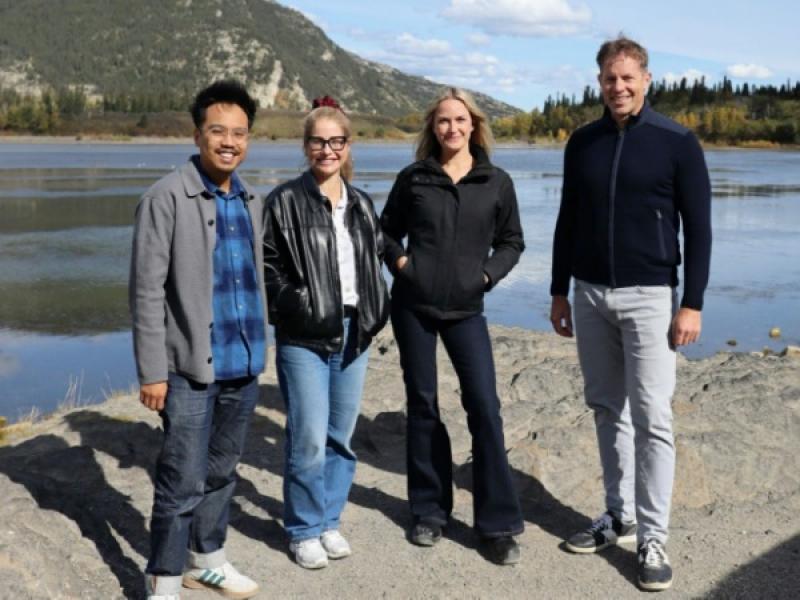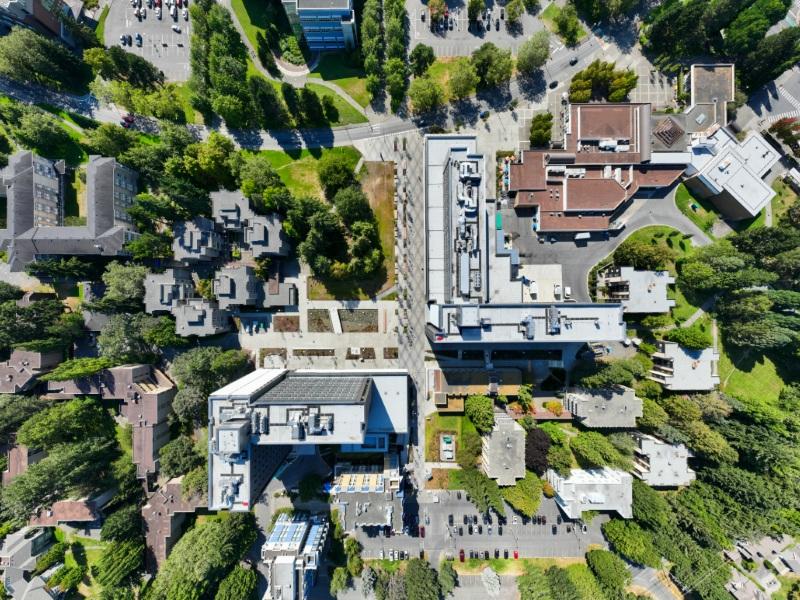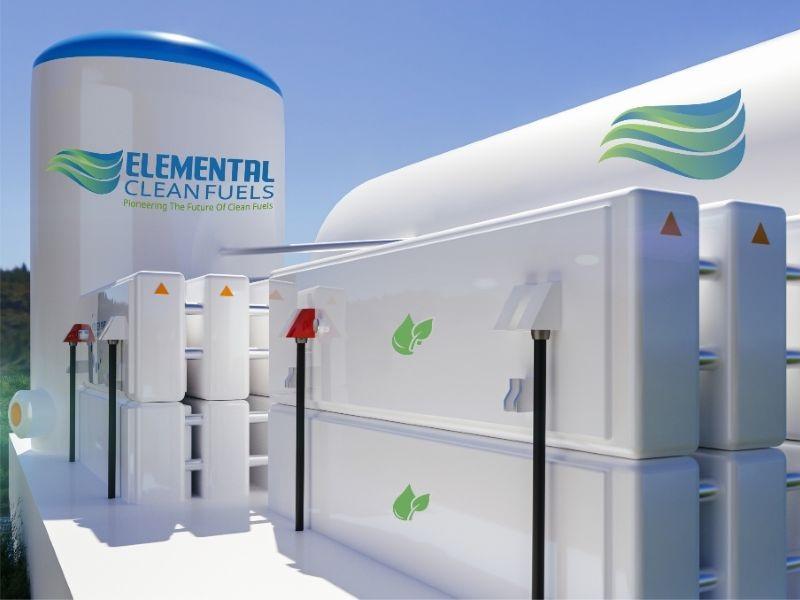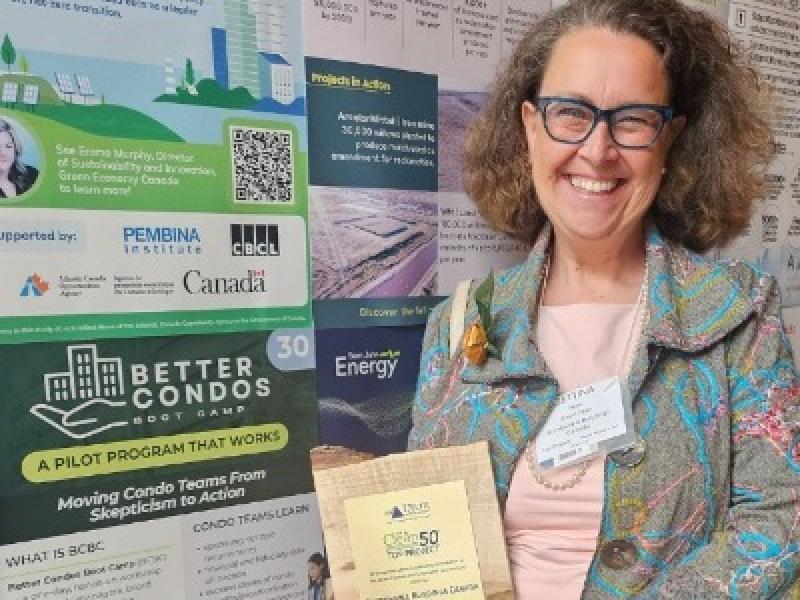
Woodland Eco Homes is attempting to replicate the evolving commercial real estate paradigm in the residential housing sector by building an eco-friendly, 3,200-square-foot single-family home that will serve as a prototype for a zero-carbon home.
In the commercial real estate sector, every major developer is investing heavily in converting existing properties into highly energy efficient and sustainable buildings. Similarly, new projects that are coming on stream are significantly more energy efficient as the result of the installation of high tech HVAC systems, solar panelling, and other technologies that are reshaping the built environment.
The zero-carbon home is the grand design of Shane Gabriel, founder and CEO of Burlington, Ont.-based Woodland, and his investment partner Melissa Jacobs, who also serves as vice-president, ESG at First Capital Real Estate Investment Trust (FCR).
"Shane and I met nearly three years ago and immediately bonded over our passion for green building and protecting the environment," Melissa Jacobs told SustainableBiz.
"With his vast experience in construction and my career in advancing sustainability practices in the commercial real estate industry, we set out to start a renovation and home building company with our shared values at its core and create homes that are high performing, use less energy and create less waste. We are also passionate about educating homeowners and other builders about the changes they can make to reduce the carbon footprint of their homes."
Together, they are seeking to bring about a small-scale revolution in both the conception and construction of the single family dwelling.
A house built to last a lifetime
The Woodland home prototype - which the company refers to as 5427 Anthony Place - follows the building practices and techniques of the Passive House model. This is the global standard recognized by the United Nations as the optimal means of constructing healthy, climate-resilient, affordable and energy-efficient buildings.
"My hope is to build houses of such quality that will never need to be torn down - ever," Gabriel said. He expressed concern about homes in Burlington that are built and torn down within a decade or two, and each home contributing approximately 40 to 50 tonnes of waste to landfills.
"So my end goal is to build high performance homes with ultra-insulated walls that will enable your HVAC equipment, your cooling equipment, hot water tank to cycle less . . . and be the best built house that never needs repair, never needs renovation, and lasts a lifetime."
State-of-the-art housing features
Expected to be completed in July, the Woodland single-family home prototype incorporates state-of-the-art housing features and technology that reflect the potential inherent in modern, low-carbon home design. These include:
- 12.5-inch-thick exterior walls using locally sourced lumber;
- double wall framing allowing for as much insulation to be packed into the exterior envelope as possible that achieves R-values in the 50s;
- use of advanced technologies and methods of air sealing the house to maximize HVAC performance, which Woodland believes should be the new standard for all home construction or home renovation/retrofitting;
- total reliance on electricity for heating and cooling, using heat pump technology (no greenhouse gas emissions from burning natural gas);
- high tech hot water heating system whereby the hot water tank operates as an air source heat pump which condenses the air inside the house to heat water;
- and installed with a ready-to-use electric vehicle charger to enable homeowner to further reduce their carbon footprint.
The home is also solar-ready, including a conduit which runs from the roof to the mechanical room to facilitate installation.
Creating a zero-carbon, eco-friendly living space
According to Gabriel, the prototype morphs into a zero-carbon dwelling with the addition of solar panels to the overall tech package.
"By the time it is built it is already using so little energy that with the installation of solar panels . . . it's near net-zero, that would really be the idea," Gabriel said.
Apart from the prototype's zero carbon appeal, the architectural scheme will also be a major selling point that will appeal to the target group of middle-class home buyers who are increasingly conscious of the need for environmental vigilance and commitment.
"What we're building is going to appeal to a broad spectrum of the public," Jacobs said. "It's going to be a very visually appealing and very functional family home . . . We're looking to find the right buyer for the home and hopefully get a lot of people coming through who appreciate its design and its location in a great neighbourhood."
Jacobs said many people are still not thinking about carbon neutrality and climate change on a day-to-day basis, which Woodland hopes to change.
"Our company is taking the approach that we want to be able to plant that seed and start to educate the general public when it comes to climate change and how much more we can be doing to create eco-friendly spaces to live in," she said.
Priced only "marginally" above comparable-sized houses
Finding a target price point that meets the threshold level of consumer expectations will be critical to whether Woodland can establish its prototype as the new high performance, low carbon standard for the Canadian home building industry.
"Once we put this house on the market, we're going to be able to be fairly in line with a comparable home in terms of the sale price," Jacobs said. There "may be a bit of a premium" she said, and there is no final sale price as Woodland does not know what the market will be like in the future.
Gabriel is anxious to point out that during a recent visit to the Eco Home, the level of insulation was such that "the house was warm" and liveable despite an exterior temperature of -13 C and no heating source.
Once it is up and running, the Eco Home will use as little as 10 per cent of the energy used by similar-sized structures and allow owners to avoid the financial hazards of volatile energy prices.
Jacobs further clarifies that Woodland's marketing strategy will be to emphasize the potential for substantial annual energy savings once the house is fully operational that will then enable the company to provide "hard numbers."
Part of the marketing will be to incorporate the information Woodland gathers when the home is functioning, such as the annual savings in the future from being all-electric or the carbon tax in 2030. The pilot project will help Woodland determine how ready the market is to pay for something like the prototype.
Woodland's first Eco Home is an "open source" project
In the spirit of their small-scale approach to environmental housing, Gabriel and Jacobs have no intention of expanding into a major construction outfit. They would prefer to remain an artisanal operation ready to take on home eco-renovation and retrofitting projects on an individual basis and build new single family dwellings at a rate of one unit every eighteen months.
"I don't ever see us ramping up to build five homes per year," Gabriel said. He intends to focus on designing and creating new houses from the ground up, thereby ensuring "the highest level of quality" and maintaining Woodland's existing turnkey business model.
In addition, Woodland is effectively launching their prototype as an "open source" project whereby they are freely providing interested buyers, developers and home building companies with any and all information regarding design, construction techniques and materials used to create their housing prototype.
Jacobs believes that she and Gabriel are creating a framework that will have a positive "ripple effect" on the home building industry and make progress toward bigger climate objectives.
"So for me and Shane, we believe in educating the homeowner just as much as potentially educating other builders. Like if there's a builder who hears about our Eco Home and wonders, 'Hey, what's Woodland Eco Homes doing?' That would be really cool. And we seem to be generating some buzz already."
EDITOR'S NOTE: This story was edited after being published, with updated information from Woodland Eco Homes, about preparations to make the home solar-ready.










